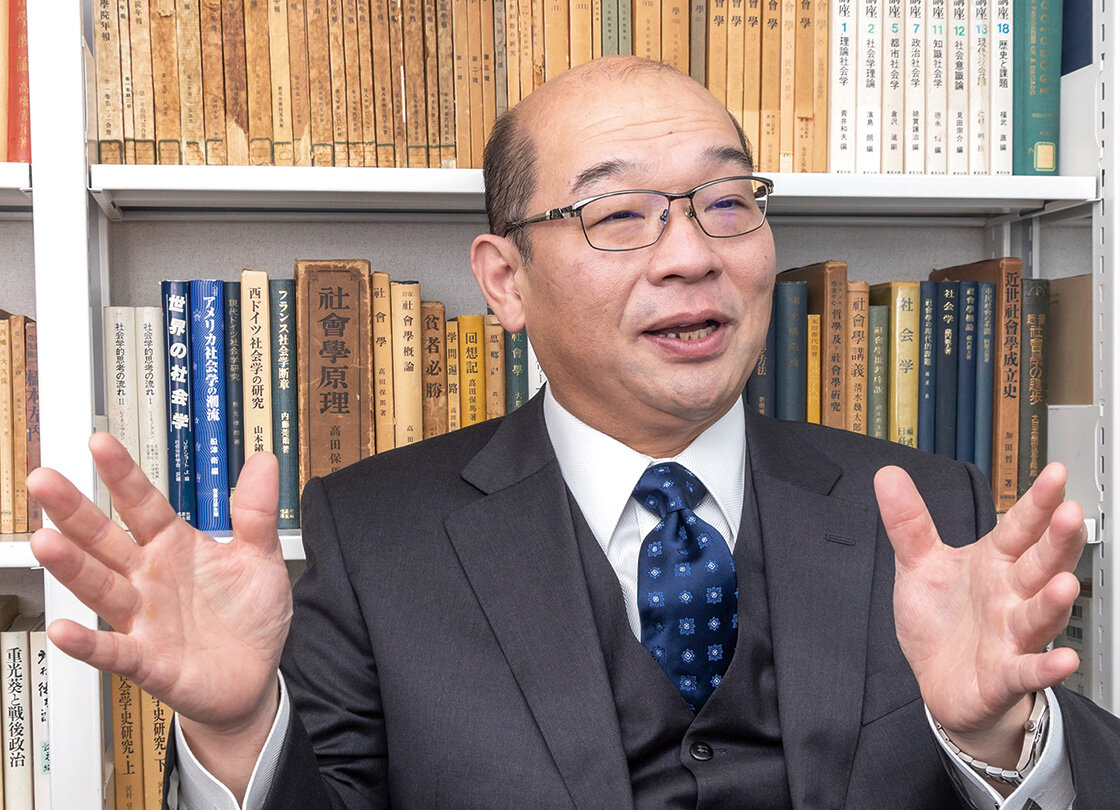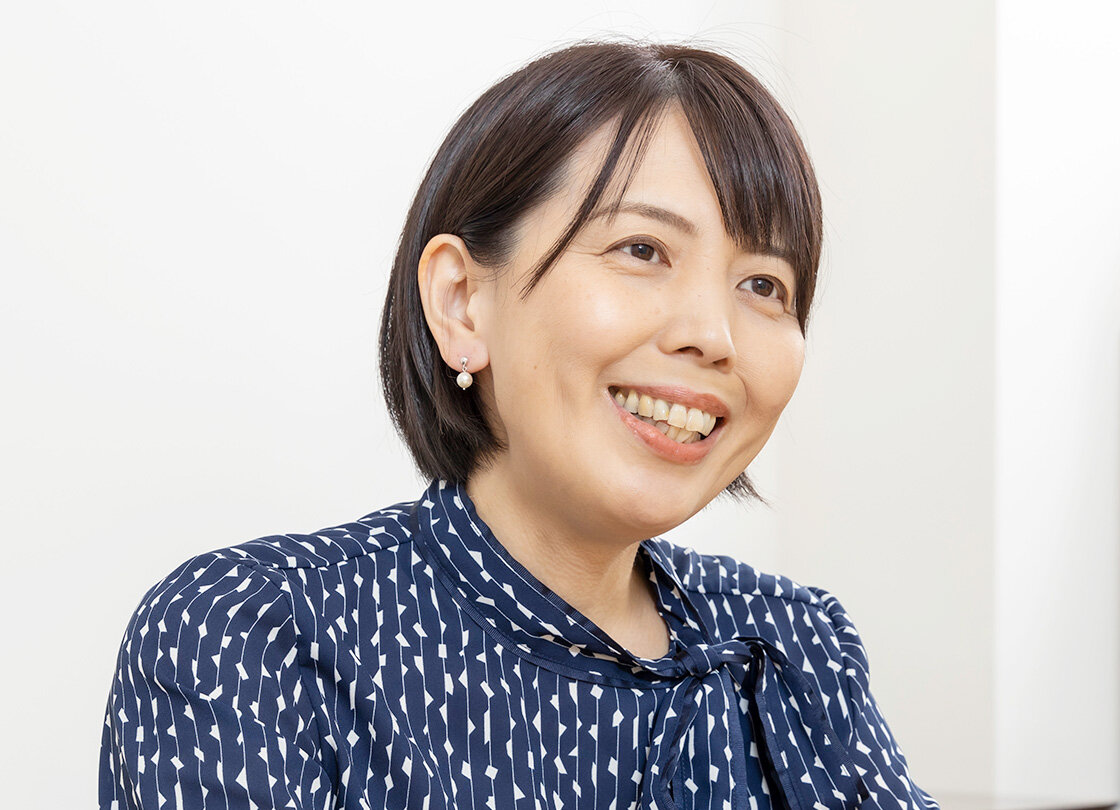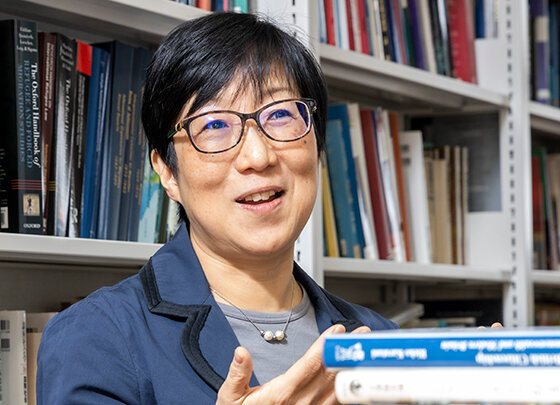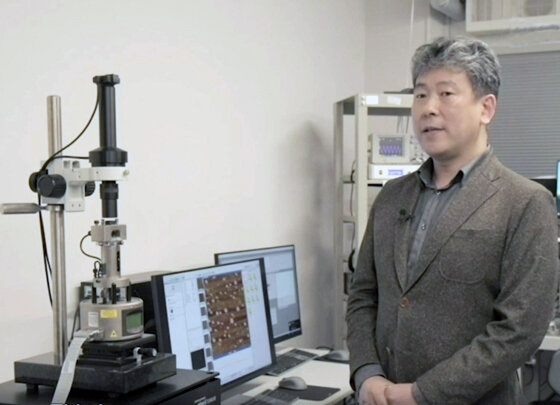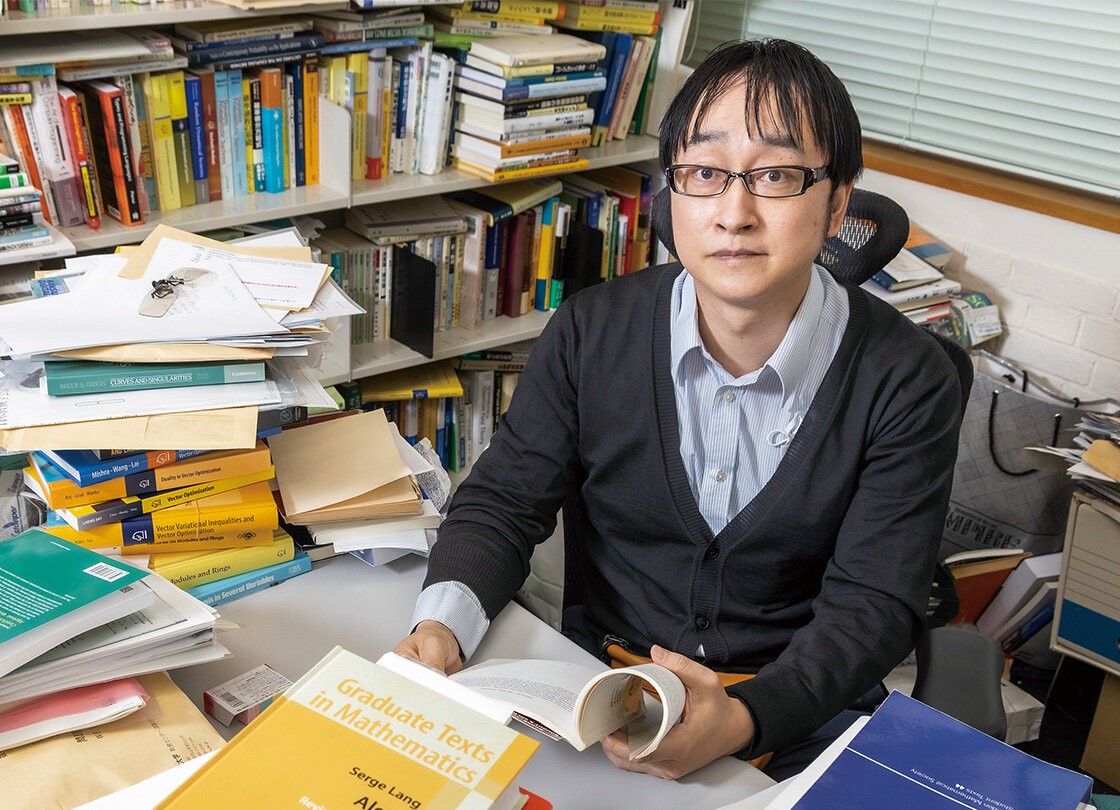KANDAI
HEADLINES

- RESEARCH
- STUDY
The future of medical care with KUMP technology
For maximal medicinal effects without side effects
Akifumi Kawamura, Associate Professor of the Faculty of Chemistry Materials and Bioengineering
In search of a way to contribute to the future of medical care through materials science and engineering, Kansai University is currently promoting the KU-SMART PROJECT―which involves medical-engineering collaboration―and is pursuing state-of-the-art research in the medical field. The goal is to develop "KUMP", an original medical polymer material, and a medical equipment. Akifumi Kawamura, an Associate Professor and project member, talked to us about his personal research related to KUMP as well as the outlook.
Changing medical care with chemistry.
The KUMP challenge

KUMP stands for Kansai University Medical Polymer. A polymer consists of many bonded atoms. For example, the polymer includes polyethylene used as the material for plastic bags, and even our bodies.
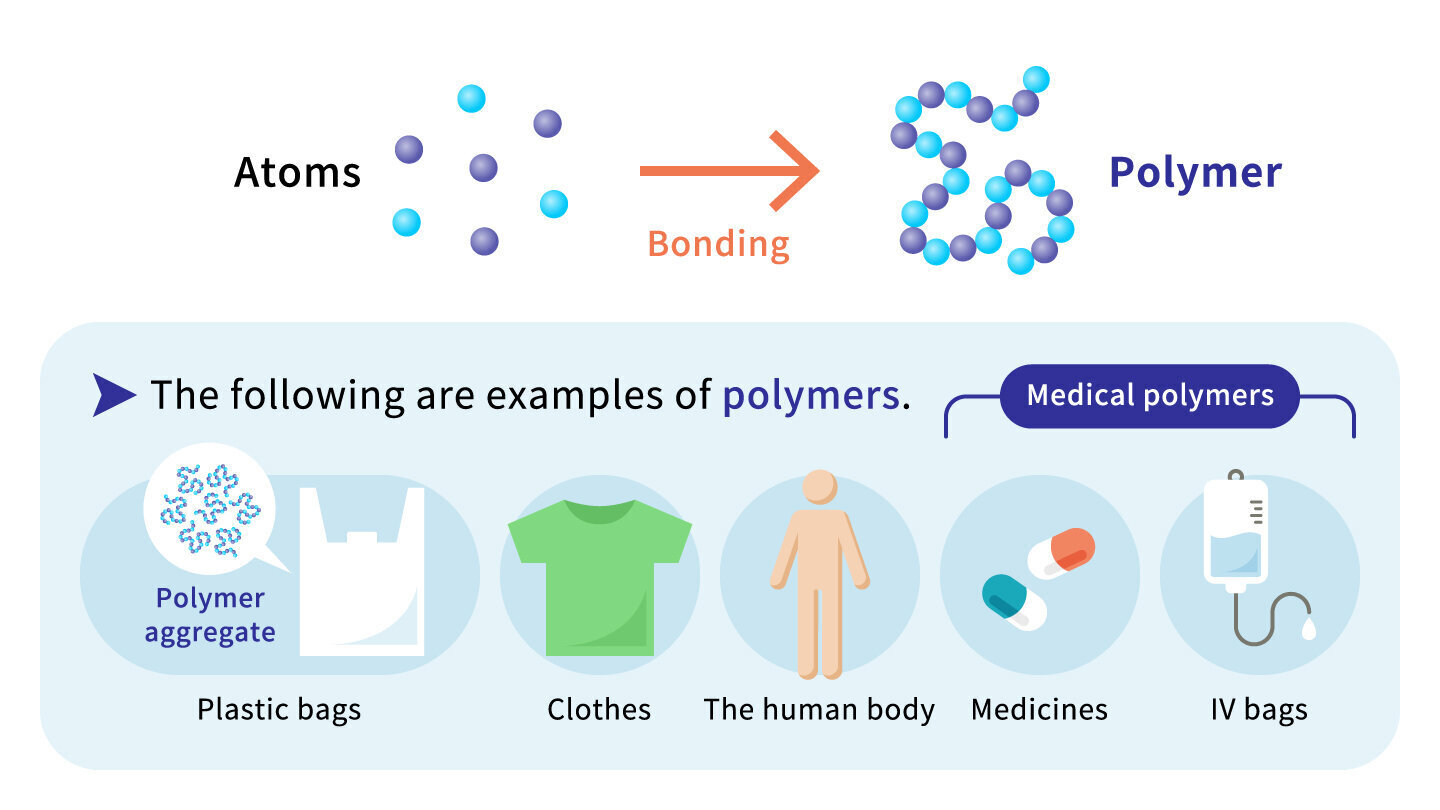
A medical polymer is a type of polymer specially designed for a medical material. Such polymers are widely used in medical settings including IV bags, artificial blood vessels, and capsules. The research and development of our new, original medical polymer, KUMP is expected to establish new treatment methods and even help treat certain intractable diseases. KUMP therefore represents a potential way to utilize Kansai University's materials science and engineering technology to contribute to medical care.
In recent years, expectations toward polymer research for medical care have been increasing. One reason for this is the belief that polymers might make it possible to achieve groundbreaking medical developments that were difficult in the past. In other words, the goal is to increase the effect of existing medicine by polymer technology as opposed to creating new medicine. I feel that this approach has a lot of potential, which is why I am continuing with my polymer research for the development of medical materials.
Development of dual stimuli-responsive gel particles for targeted drug delivery
One of my core research topics is DDSs (drug delivery systems). The purpose of a DDS is to deliver the required amount of medicine for treatment to the targeted location of the human body.
The first step is to create a capsule that only works in the cells causing the disease and then a medicine is loaded into the capsule. The capsule is then accumulated into the cells causing the disease without being digested or dissolving in the blood. When the capsule reaches its target location, it releases the medicine inside. The capsule itself is made of a polymer.
Normally, medicines have both desirable intended effects and undesirable effects, which are called side effects. To achieve medicinal effects targeting the cells causing a disease, a large amount of medicine is required, but―the more medicine there is―the stronger the effect on other cells, and the more pronounced the side effects. Solving this problem is one of the roles of a DDS.
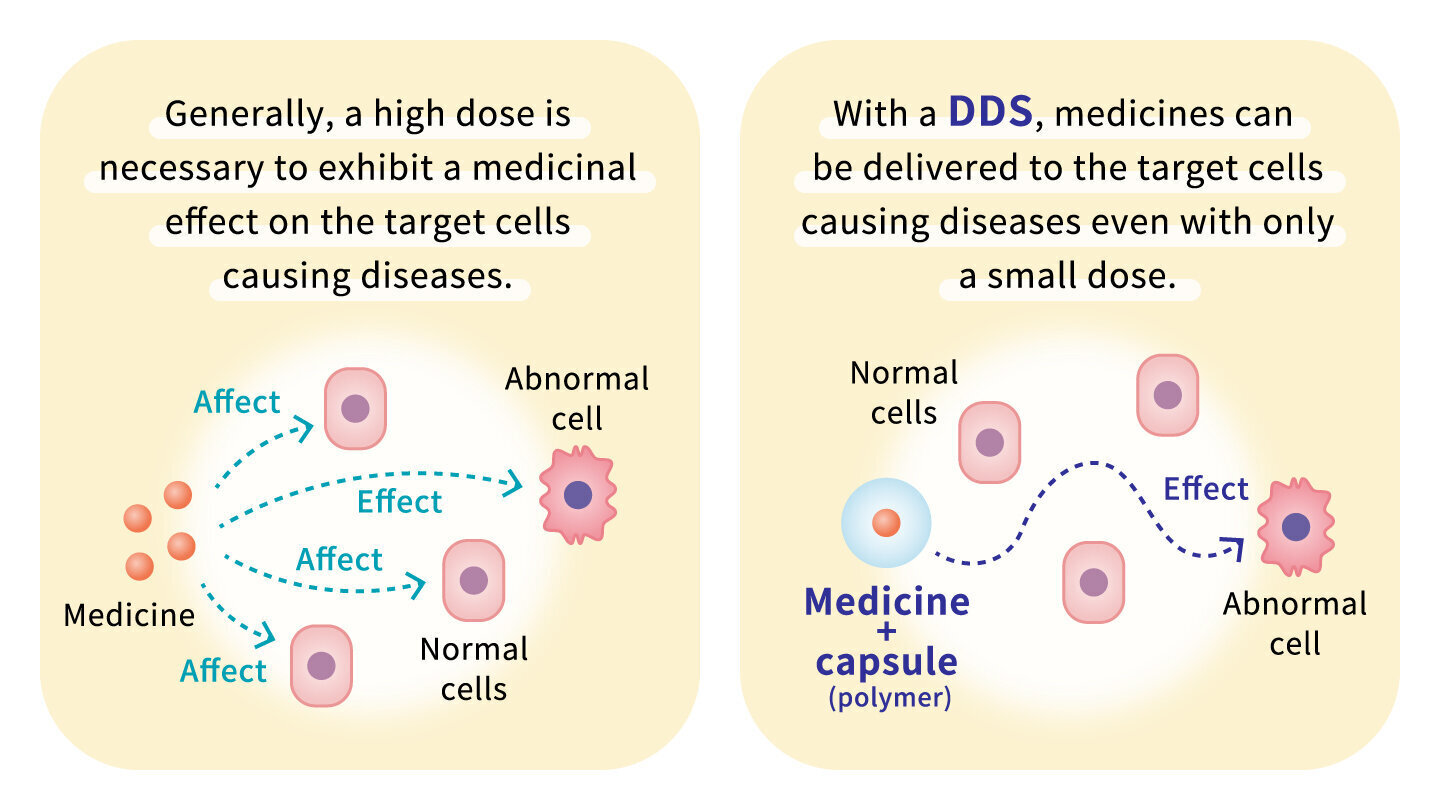
Therefore, I prepared the nanoscale dual stimuli-responsive gel particles using polymer technology. These gel particles swell under an acidic and reducing environment, at which point they release the loaded medicine. An acidic and reducing environment is the same as the environment during the process of endocytosis.* In other words, the gel particles swell and release a medicine when they are taken up by a cell.
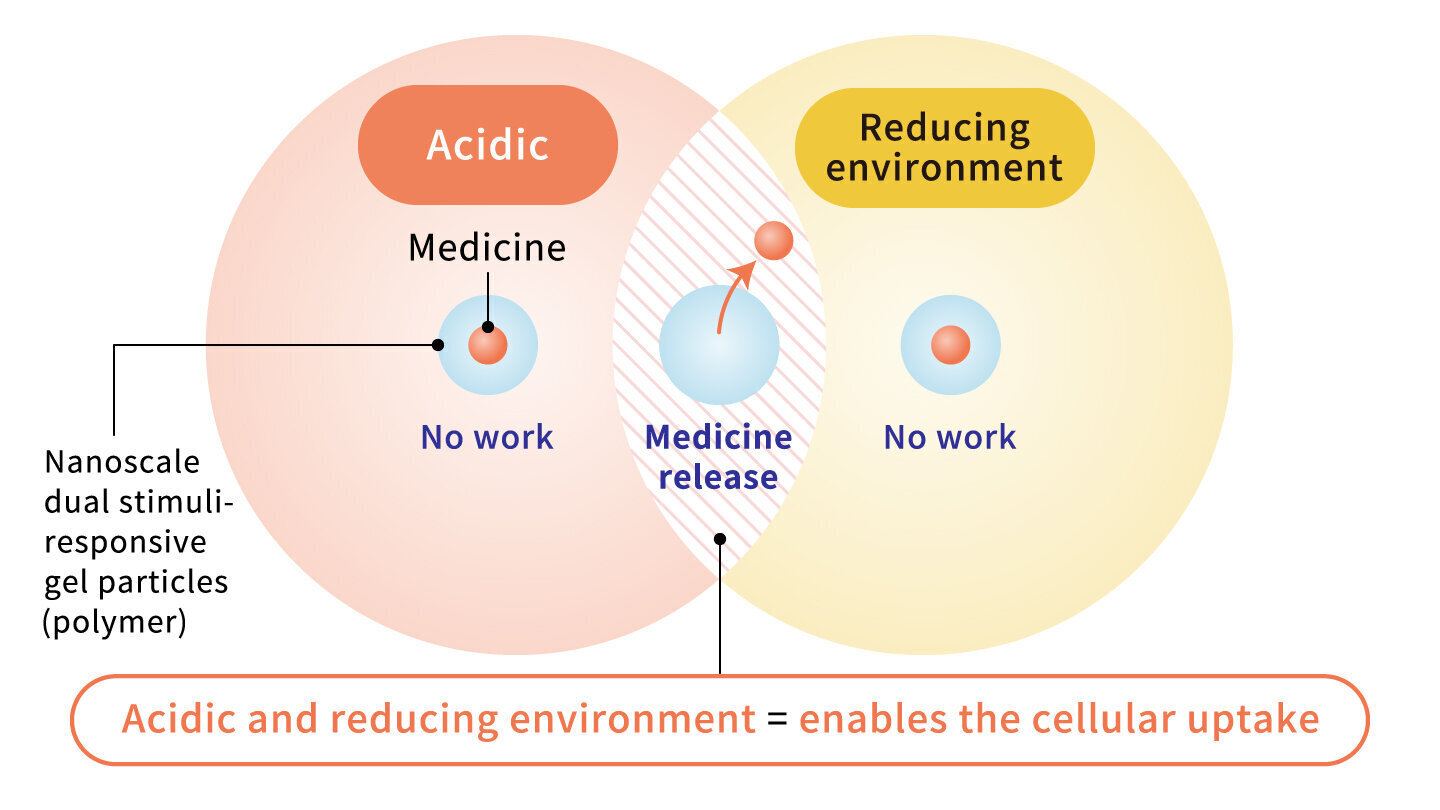
One advantage of these dual stimuli-responsive gel particles is that they are easy to synthesize. All you have to do is put the two types of monomers in water and polymerize. All you have to do is put the two types of monomers in water and polymerize. In addition, the resulting nanoscale gel particles are uniform and have a narrow size distribution. This would be extremely convenient for use as a carrier for DDS. In fact, this discovery led to the receipt of a Japan-Korea Biomaterials Research Young Investigator Award.
However, these gel particles are less efficient than other polymers for carrying medicine to cells, and―during the course of our research―we learned that making such particles practical will be difficult. Therefore, we are currently considering the use of the particles for other applications.
* What is endocytosis?
Endocytosis is one system that cells use to bring in minute particles and other large substances. Many DDS strategies involve the use of endocytosis to bring medicine into cells.
Taking on the challenge of treating cancer through a polymer for delivering microRNAs
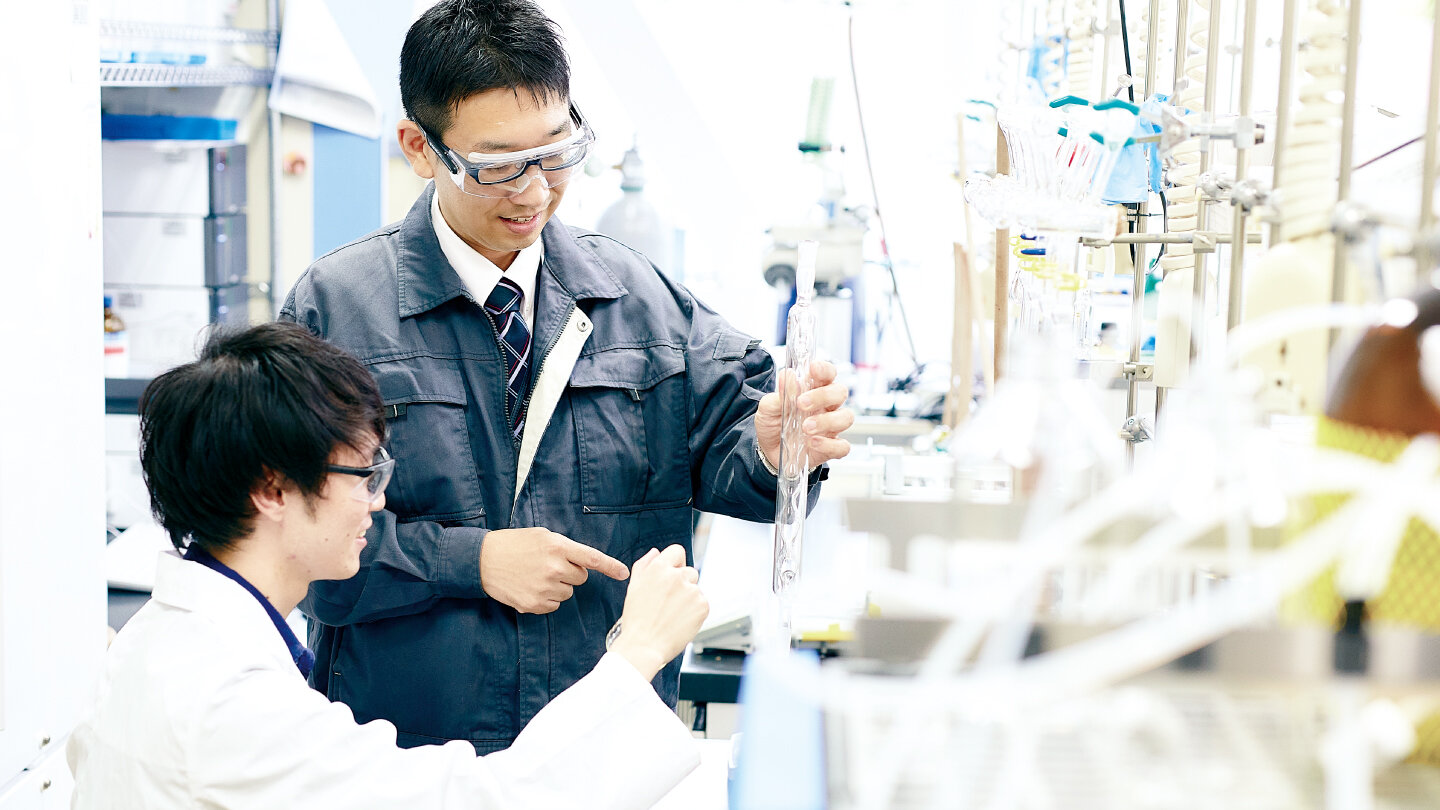
We are working on a concept related to the possibility of changing the swelling response of our dual stimuli-responsive gel particles to a degradative response to deliver microRNAs.*
There have been reports that the expression of microRNAs are upregulated or downregulated in cancer cells, and the latest research has revealed that there is a deep relationship between expression of microRNAs and cancer. Looked at in a different way, such research suggests that it might be possible to deliver microRNAs into cancer cells to restore the expression of microRNAs to that of normal cells, thereby halting the progress of cancer.
MicroRNAs are extremely small, and they are digested in the bloodstream. Therefore, to deliver them into the cells, it is necessary to cover each microRNA with polymers in order to protect them from digestion. However, this approach results in the problem of the microRNAs not being released inside cells. One strategy to resolve this problem would be a polymer that is decomposed into pieces in a cell. If we can synthesize a polymer that can deliver microRNAs into a cell and is decomposed after cellular uptake, it might be possible to produce a new medicine effective against cancer.
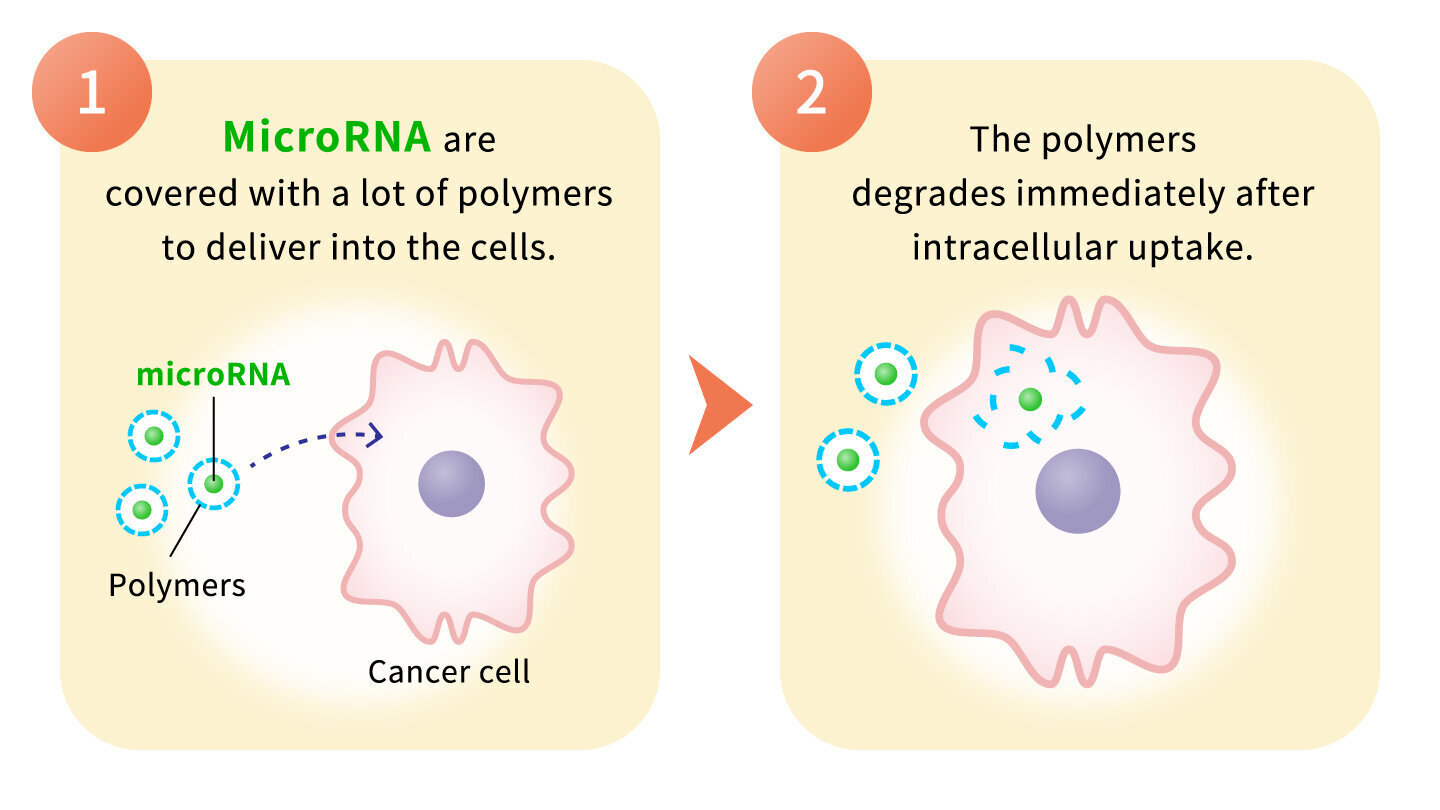
* What are microRNAs?
A microRNA is an oligonucleotide consisting of approximately 21 to 25 bases. It controls the protein synthesis by controlling the messenger RNA translation.
DDS potential that has even researchers excited
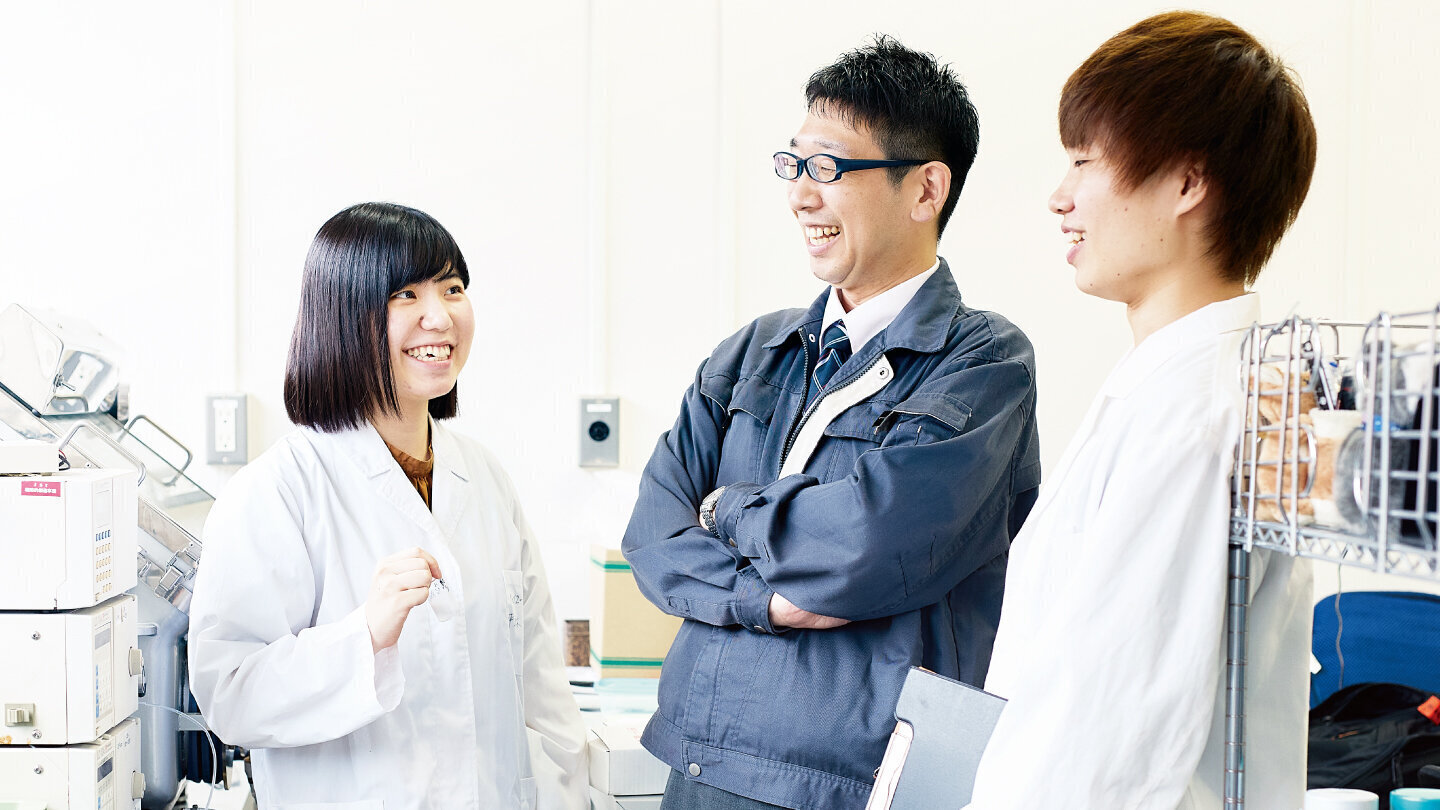
This research is still at the conceptual level. In the materials science and engineering field―both within and outside of the medical field―there is a so-called "death valley" that represents the sorting of potential scientific research for practical use. A lot of research ideas fail to overcome that. With this particular research, we can't even see the "death valley" yet.
However, collaborative research with Osaka Medical College is about to start. There are also a lot of faculty members well-trained in polymer chemistry and biomaterials fields at Kansai University, and we have extensive research facilities. Even in Japan as a whole, I believe it's rare for a university to not have a faculty of medicine or pharmacology to reach such a high level of medical research. Kansai University's environment is highly effective for promoting research, so I believe we will find a way forward as long as we keep working on our research one step at a time.
In addition, although we are mainly conducting research aimed at cancer, this technology could be used to approach any kind of medicine or disease. In addition to releasing all the medicine at once, a DDS can also be used to release medicine gradually, thereby prolonging the medicinal effects. If we can apply this technology, we can likely change the nature of medical care that is relevant to everyone, including eliminating the need to take a cold medicine multiple times per day.
When I consider the possibilities, they truly excite me as a researcher. Although we still face a lot of challenges, I believe that, if we can overcome them, we can help a lot of people with a new kind of medical treatment. That said, there is no end to research. That's why I'll try to enjoy the process―issues and hardships included―as I continue with mine.
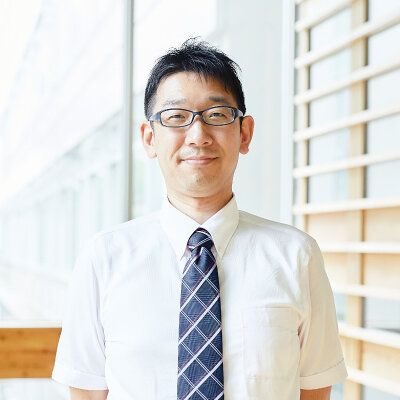
- Akifumi Kawamura, Associate Professor (Faculty of Chemistry, Materials and Bioengineering), Advanced Polymer Chemistry Lab
- Dr. Kawamura started working at Kansai University in 2012 after working on research and development at a company. He has won awards that include the Japan-Korea Biomaterials Research Young Investigator Award and Polymer Research Encouragement Award. As a member of the KU-SMART PROJECT, he is also involved in KUMP development.
Related articles
- TOP
- About Kansai University
- Public Relations
- List of Headlines
- Headline Article





